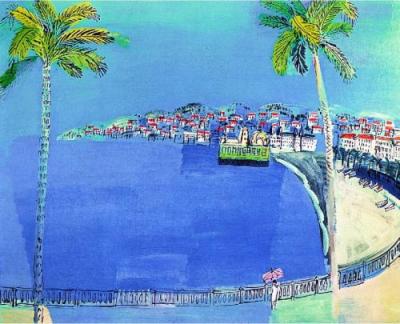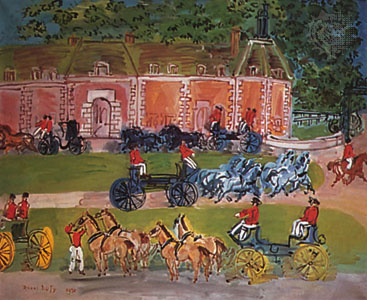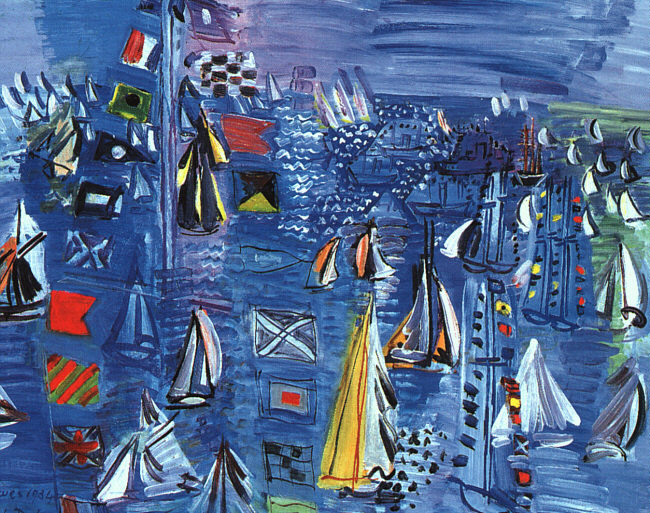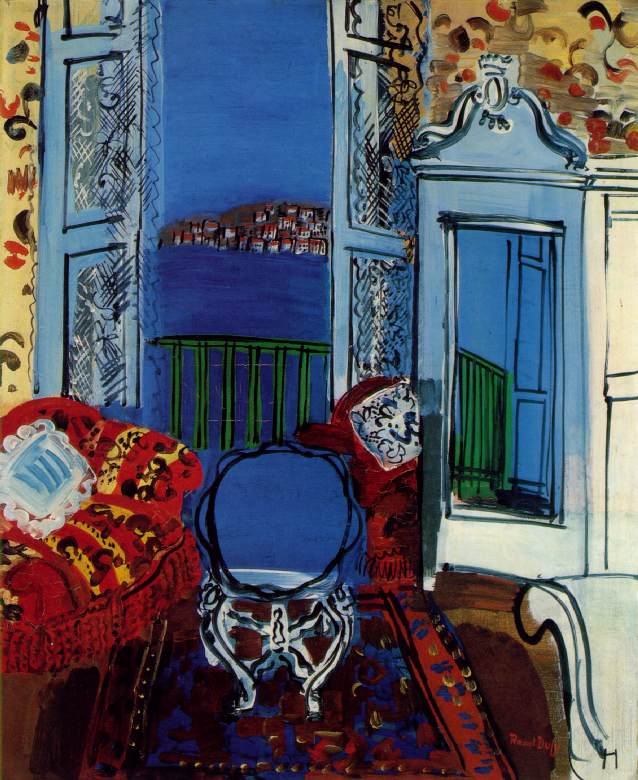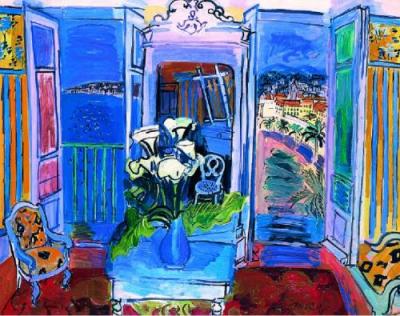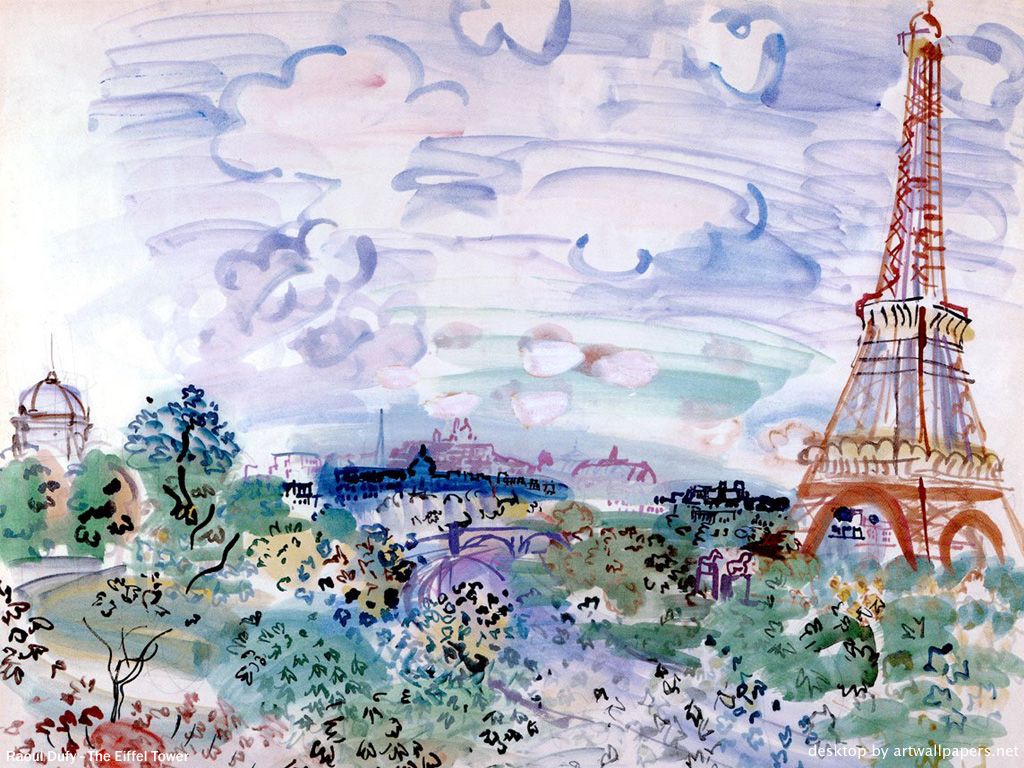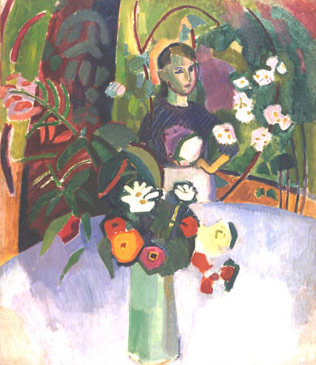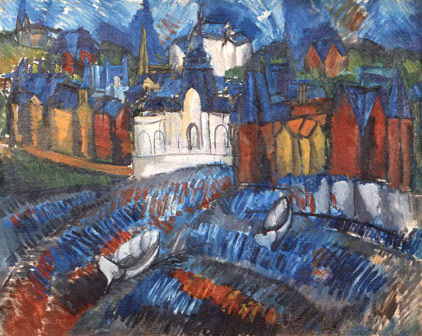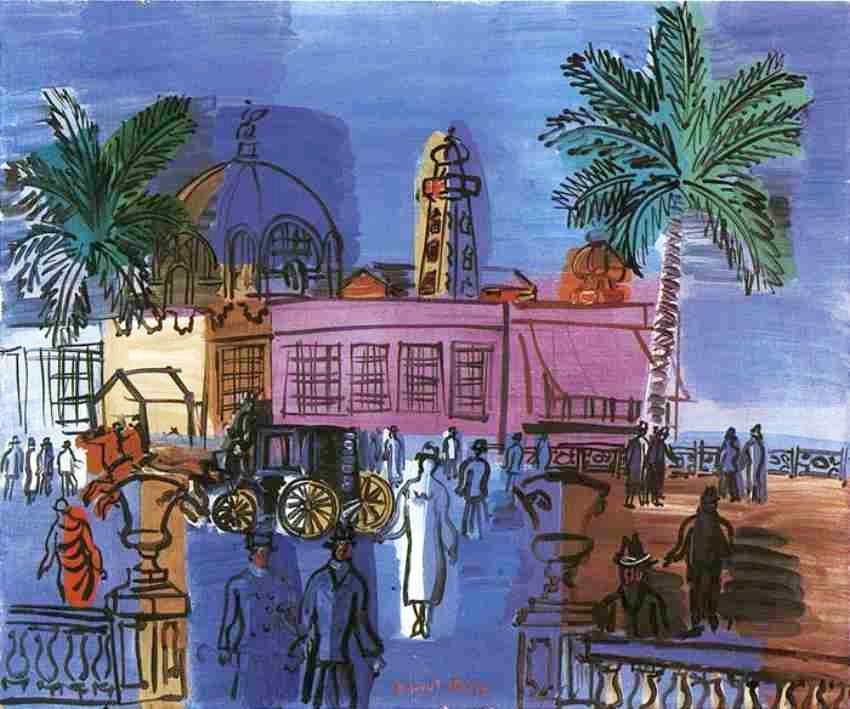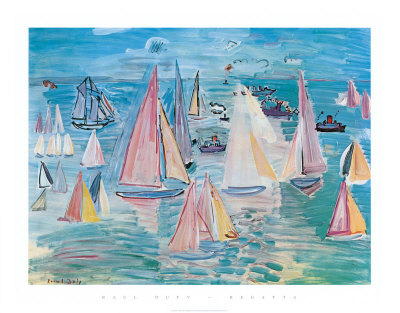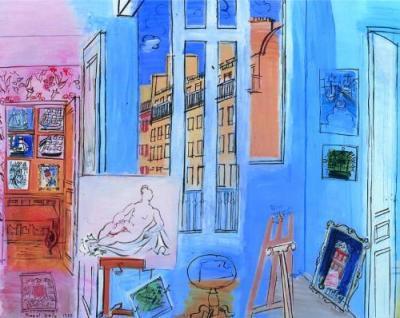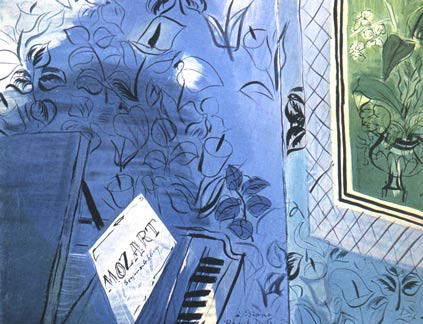<Back to Index>
- Biophysicist Georg von Békésy, 1899
- Painter Raoul Dufy, 1877
- Argentinian Revolutionary Manuel José Joaquín del Corazón de Jesús Belgrano, 1770
PAGE SPONSOR
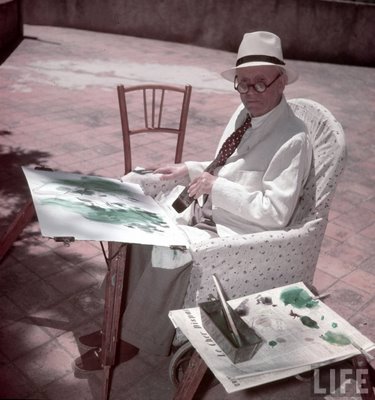
Raoul Dufy (3 June 1877 – 23 March 1953) was a French Fauvist painter. He developed a colorful, decorative style that became fashionable for designs of ceramics and textiles, as well as decorative schemes for public buildings. He is noted for scenes of open-air social events. He was also a draftsman, printmaker, book illustrator, a theatrical set-dresser, a designer of furniture, and a planner of public spaces.
Raoul Dufy was born into a large family at Le Havre, in Normandy. He left school at the age of fourteen to work in a coffee importing company. In 1895, when he was 18, he started taking evening classes in art at Le Havre's École d'Art (municipal art school). The classes were taught by Charles Lhuillier, who had been, forty years earlier, a student of the remarkable French portrait painter, Ingres. There, Dufy met Raymond Lecourt and Othon Friesz with whom he later shared a studio in Montmartre and to whom he remained a lifelong friend. During this period, Dufy painted mostly Norman landscapes in watercolors.
In 1900, after a year of military service, Dufy won a scholarship to the Ecole Nationale Superieure des Beaux-Arts in Paris, where again he crossed paths with Othon Friesz. (He was there when Georges Braque also was studying.) He concentrated on improving his drawing skills. The impressionist landscape painters, such as Claude Monet and Camille Pissarro, influenced Dufy profoundly. His first exhibition (at the Exhibition of French Artists) took place in 1901. Introduced to Berthe Weill in
1902, Dufy showed his work in her gallery. Then he exhibited again in
1903 at the Salon des Independants. A boost to his confidence: the
painter, Maurice Denis, bought one of his paintings. Dufy continued to paint, often in the vicinity of Le Havre, and, in particular, on the beach at Sainte-Adresse, made famous by Eugene Boudin and Claude Monet. In 1904, with his friend, Albert Marquet, he worked in Fecamp on the English Channel (La Manche). Henri Matisse's Luxe, Calme et Volupté,
which Dufy saw at the Salon des Indépendants in 1905, was a
revelation to the young artist, and it directed his interests towards Fauvism. Les Fauves (the
wild beasts) emphasized bright color and bold contours in their work.
Dufy’s painting reflected this aesthetic until about 1909, when contact
with the work of Paul Cézanne led him to adopt a somewhat subtler technique. It was not until 1920,
however, after he had flirted briefly with yet another style, cubism,
that Dufy developed his own distinctive approach. It involved skeletal
structures, arranged with foreshortened perspective, and the use of
thin washes of color applied quickly, in a manner that came to be known
as stenographic. Dufy's cheerful oils and watercolors depict events of the time period, including yachting scenes, sparkling views of the French Riviera, chic parties, and musical events. The optimistic, fashionably
decorative, and illustrative nature of much of his work has meant that
his output has been less highly valued critically than the works of
artists who have addressed a wider range of social concerns. Dufy completed one of the largest paintings ever contemplated, a huge and immensely popular ode to electricity, the fresco La Fée Electricité for the Exposition Internationale in Paris. Dufy
also acquired a reputation as an illustrator and as a commercial
artist. He changed the face of local fashion and fabric design with his
work for Paul Poiret.
He painted murals for public buildings; he also produced a huge number
of tapestries and ceramic designs. His plates appear in books by Guillaume Apollinaire, Stéphane Mallarmé, and André Gide. Dufy died at Forcalquier, France, on 23 March 1953, and he was buried near Matisse in the Cimiez Monastery Cemetery in Cimiez, a suburb of the city of Nice.
In 1909, Raoul Dufy was commissioned by Paul Poiret to design stationery for the house, and after 1912 designed textile patterns for Bianchini-Ferier used in Poiret's and Charvet's garments.


